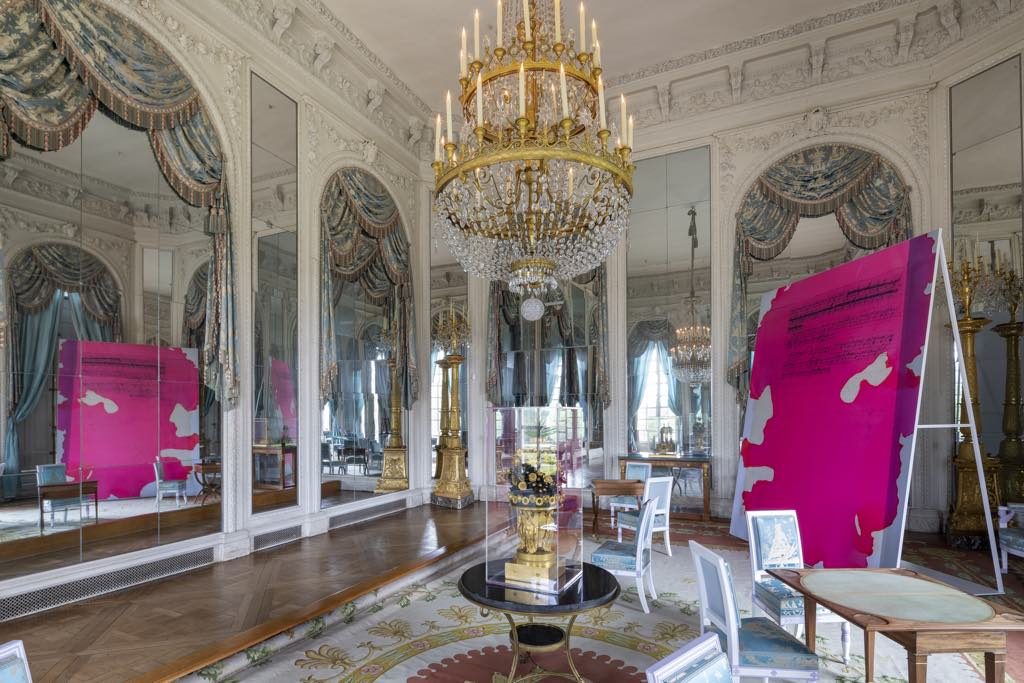
If you want to avoid the crowds next time you go to Versailles, skip the château itself and go to the Domaine du Grand Trianon to see the exhibition “Versailles: Visible/Invisible,” a continuation of the now-annual incursion of contemporary art into the former realm of the Ancien Régime.
Choose a beautiful day, if possible, and you will feel like you have landed in paradise, one fit for a king, or actually a queen, since Marie-Antoinette herself loved to escape from Louis XIV’s supersized château to the smaller and somewhat simpler Grand Trianon and Petit Trianon. The exhibition takes visitors into both buildings, plus some outbuildings not normally open to the public, and into the beautiful gardens surrounding them to see the site-specific works of five photographers – Viviane Sassen, Dove Allouche, Martin Parr, Eric Poitevin and Nan Goldin – exhibited in places they chose themselves.
Upon entering the Grand Trianon, you will encounter Sassen’s large-format color photos in the various salons. The image of a pink-splotched letter (pictured at top of page) requires a little explanation: it shows a letter written in code by Marie-Antoinette to her close friend (and possible lover), Count Hans Axel von Fersen, and his partial transcription of it. Sassen did a great deal of research on the history of Versailles and used this story and others – notably, the one supposedly involving Louis XIV’s mistress Madame de Montespan in a poisoning scandal – to inform her works. Don’t miss her video, narrated by Tilda Swindon, which brings all these threads together.
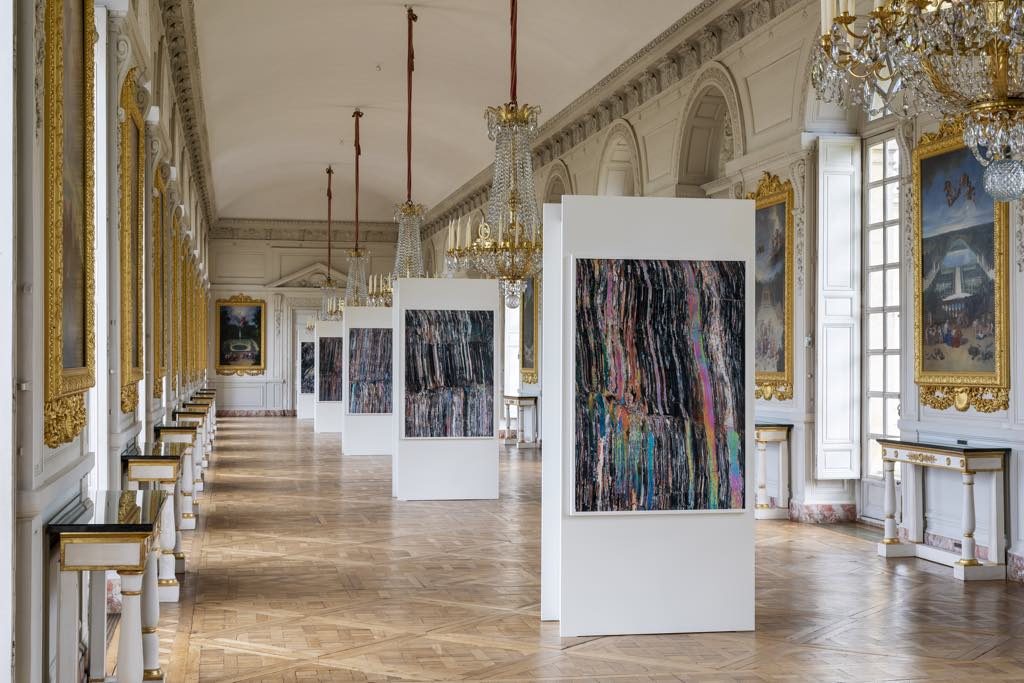
Also in the Grand Trianon, in the Galerie des Cotelle, is a highly conceptual installation by Dove Allouche, who chose to slice up a sample of gypsum, the humblest building material used in the construction of Versailles, and expose the cross-sections directly onto photographic paper. For the artist, the resulting striated images were upsettingly rich in color (the result of crystals in the gypsum) – his work is normally devoid of color.” I couldn’t calm the colors down,” he says, “so I had to calm myself down.”
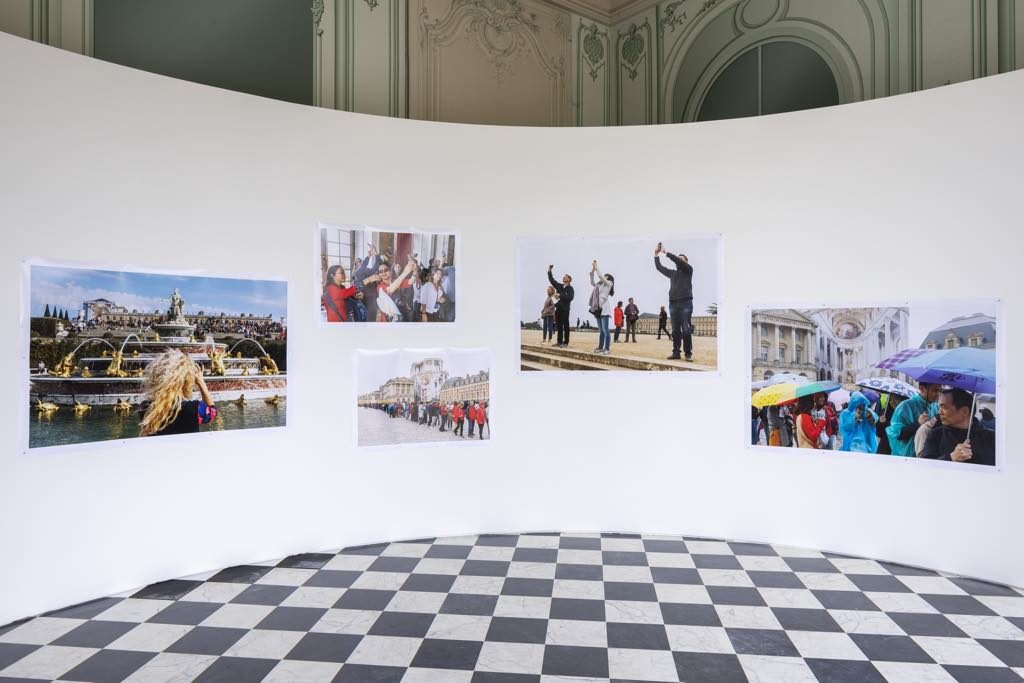
If you miss those crowds of tourists at the château, not to worry, you’ll come across them again in Martin Parr’s exhibition in the Pavillon Frais, one of many little bijoux buildings scattered around the park. With his usual sense of color and humor, Parr, who (amazingly) had never been to Versailles before, took thousands of shots of tourists, his favorite subject, as they took photos or selfies, queued in the rain or marveled at the palace. The sight of the moving stampede of tourists in front of the château “was like nectar to me,” he said. “I was in seventh heaven.”
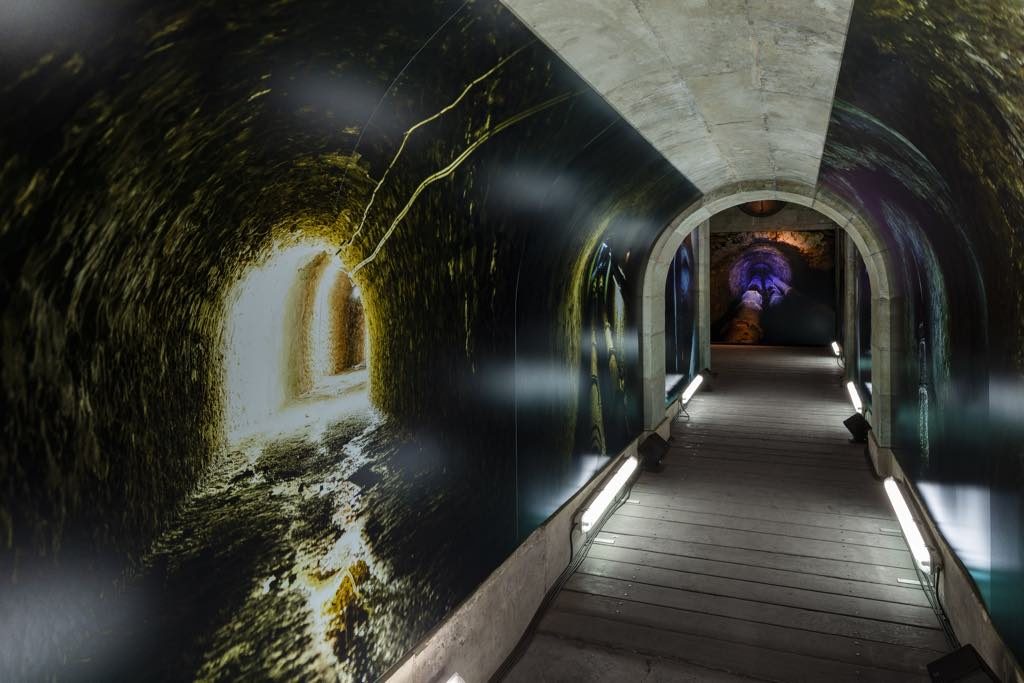
Nan Goldin found Versailles to be “too beautiful,” so she went looking underground for its “hidden, dirty side.” In “the belly of the beast,” she photographed the complex system of pipes that delivers water to the château’s 55 fountains. She chose to exhibit them in dark corridors under the Petit Trianon. Always political (her main interest right now is the opioid crisis and anti-Sackler activism through the organization P.A.I.N.), she also included images of Versailles’ statues of women to reference the Women’s March to Versailles in 1789, which helped spark the French Revolution, echoing the annual Women’s Marches now held around the world. The soundtrack through this exhibition in a tunnel consists of appropriate watery underground noises and famous actresses reading Olympe de Gouges’s 1791 “Declaration of the Rights of Woman and the Female Citizen.”
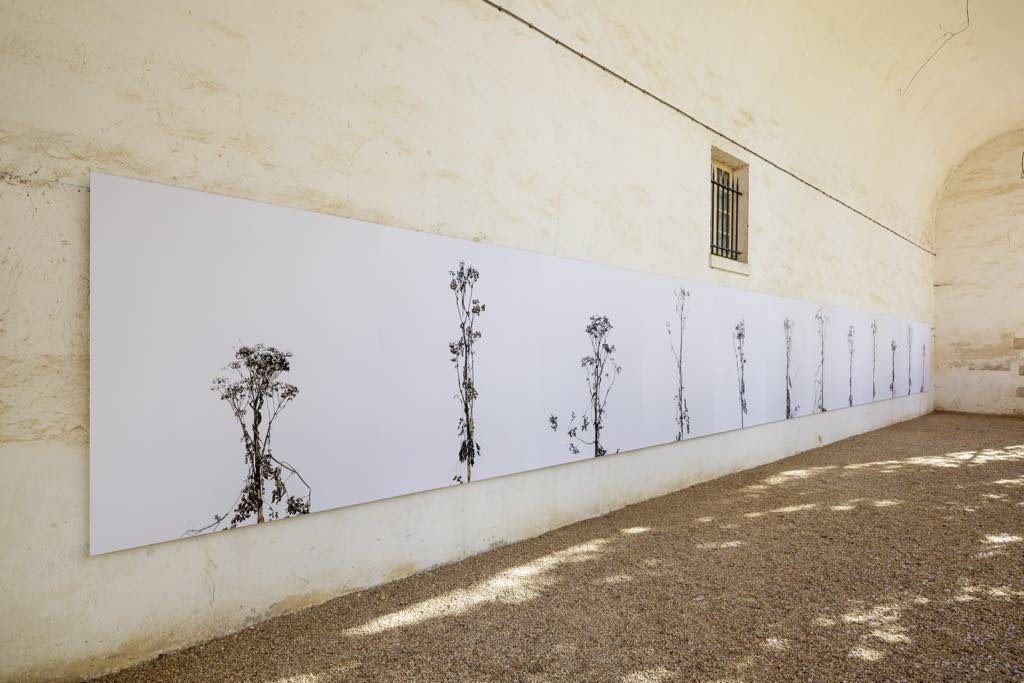
Photographer Éric Poitevin chose the Orangerie and the Fruiterie to show his minimalist, large-scale images. In one space are simple close-ups of an austere plant, angelica, and in the other his daring attempts to photograph the sun directly.
The works may be highly diverse, but it would seem that all of these artists looked for and found humbler or more hidden sides of the grandiose palace that is Versailles.
Favorite

What are the dates of this show, please? I would love to see it when in Paris IN LATE October-early November 2019.
As always, the end date of the exhibitions is posted in red in the upper righthand column of the page, in this case, Oct. 20, 2019.